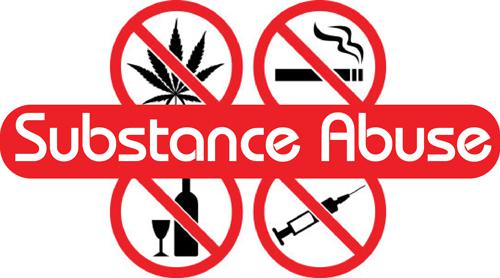Workplace Safety - Drug and Alcohol Abuse
Consumption of drug and alcohol among the employees can be an expensive and ruining problem for businesses and industries. Alcohol is the most widely abused substance in the world today. A majority of victims of alcohol are young and adult people.
Issues that escalate from such abuse of drug and alcohol are many, such as reduced productivity, absenteeism, injuries, and low employee morale.
Drugs and Alcohol problems are also called as the substance abuse or misuse, which is very harmful to self as well as to the others who could be family members, friends and colleagues working in your organization.

The drugs and alcohol changes the person’s behavior and his/her character as well. This change in behavior and character effects many people who are living in and around of the persons, who are addicted causing into many problems.
For Employees
Alcohol drug consumption among the employees prove destructive not only for the employee/s concerned but also for their families and the organization they work with. It leads a lot of problems like nearly perpetuated absenteeism, vague behavior, lack of skill and loss ability to take prompt decision while working.
The aforesaid issues that emerge from regular consumption of alcohol and drug by employees hamper overall productivity and disrepute the organization. Alcohol and drug kills the natural talent and ability among the employees.
Employees’ addiction with alcohol and drug costs the employer or the management exorbitantly. The exact cost of such burden is very difficult to calculate. Employers or the management are keenly aware of the issues arising from employees’ alcohol and drug abuse.
Additional problem areas can comprise of −
Delay/sleeping on the job
Aftermath of substance use (hangover, withdrawal) influencing job performance
Poor decision making
Loss of regulation
Low confidence of co-workers
Increased chances of having trouble with co-workers/managers or tasks
Illicit activities at work including selling illicit drugs to other employees
Improper behaviors at workplace
Pensiveness with acquired and using substances while at work, interfering with attention and concentration
A drug and alcohol addict is also a source of splitting headache for his/her family. Even addiction of other members of his/her family has a debilitating effect on the performance of the employee.
Two specific kinds of drinking behavior create work-performance problems −
And it isn’t just alcoholics who create problems in the workplace, research has shown that the majority of alcohol-related work-performance issues are connected with nondependent drinkers who may once a while drink too much and behave differently much to the detriment of smooth running of work.
There is always a level of danger when using any drug including prescription or over-thecounter medications. Drug responses vary from person to person. If you are taking a drug you haven’t had before, you won’t know how it will influence you. It’s significant to follow your doctor’s advice when taking prescription drugs and discuss any side-effects and how this might influence on your work.
The Way-out
The employers should make necessary provisions to check alcoholism and drug abuse among the employees.
Strict rules and code of conduct should be in place to disallow drunk employees to work
Interaction both on personal and group level with employees to know about their state of mind
Consultation facilities for individual employee by experts
Corrective measures to bring in change in the victims and refresh their minds with fresh and constructive ideas and outlooks
For Managers and Supervisors
An employee’s commitment to drink is that individual’s personal business; however, when the use or abuse of alcohol impede the employee’s ability to perform his or her duties, the employer does have lawful concerns, including the concerns for proper performance of duties, health and safety issues, and employee conduct at the workplace.
Supervisor’s Role
As a supervisor, you have a significant role in containing alcohol problems in the workplace, along with other agency officials. You have the day-to-day authority to monitor the work and on-the-job performance of your employees. You are responsible for identifying alcoholism in employees. Basic administrative responsibilities include −
Allocating, monitoring, Studying, and appraising work and performance
Fixing work schedules, accepting or disliking leave requests
Mentioning employees to your agency’s Employee Assistance Program (EAP)
Proceedings necessary remedial and disciplinary actions when performance or conduct problems surface
At any time, if an employee is found to have suffered from the problem of substance abuse, the manager needs to 7−
Gather resources and education materials for treatment of persons suffering from substance abuse
Look through legal recourses while dealing with such victims
Explore insurance coverage to meet financial concern for the treatment of the victims of substance abuse
On seeing an employee showing common signs of substance abuse, address the issue directly having a personal conversation with the employee in which you review the company’s policy, express your concerns and provide any resources you have gathered
For example, an employee may become drunk while on duty or be arrested for drunk driving. Your role is not to analyze the alcohol problem but to exercise responsibility in dealing with the performance or conduct problem, hold the employee answerable, refer the employee to the EAP, and take any perfect disciplinary action. Your role in dealing with alcoholism in the workplace is deciding.
The most useful way to get an alcoholic to deal with the problem is to make the alcoholic aware that his or her job is on the line and that he or she must get help and advance performance and conduct, or face serious reactions, including the possibility of losing his or her job.



